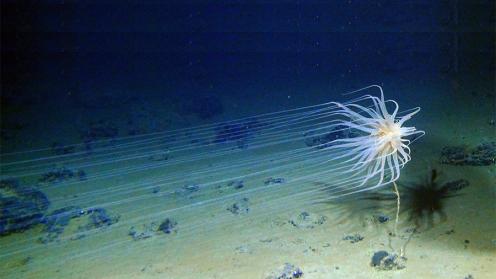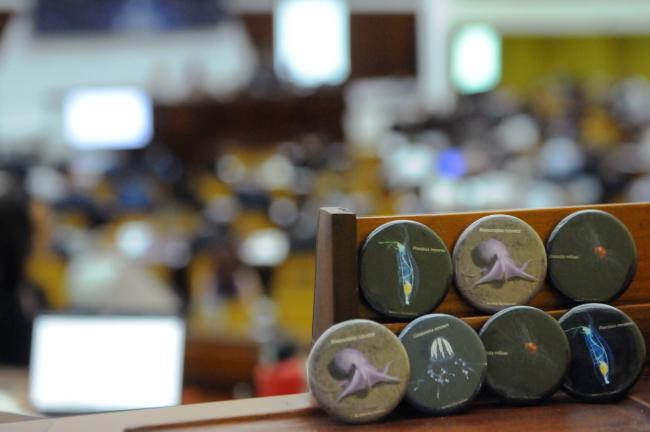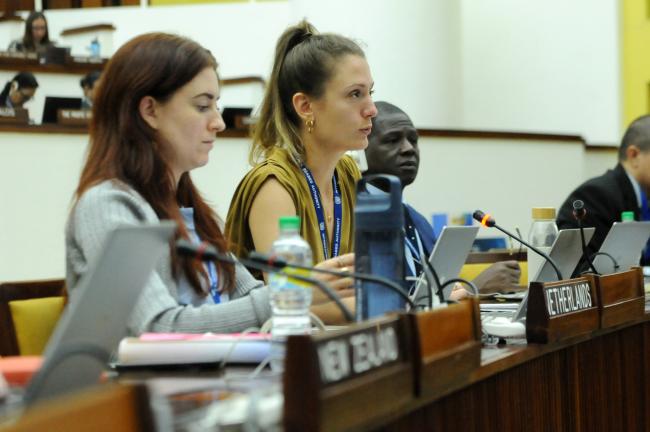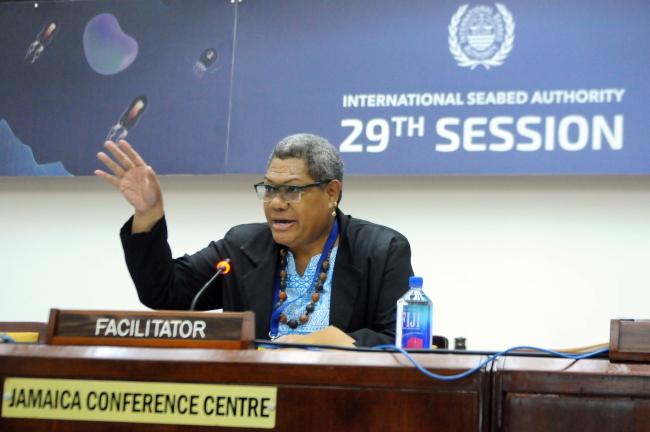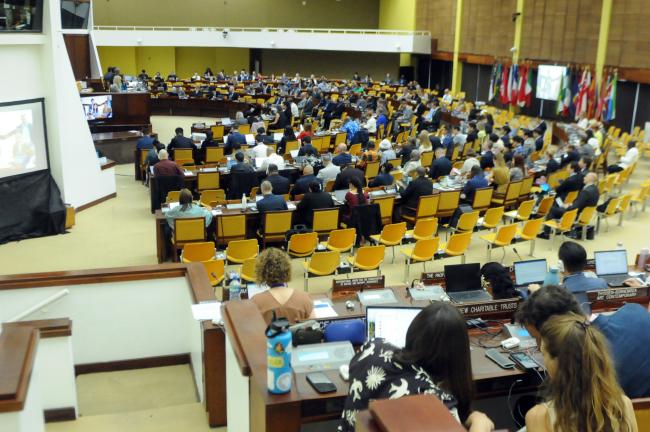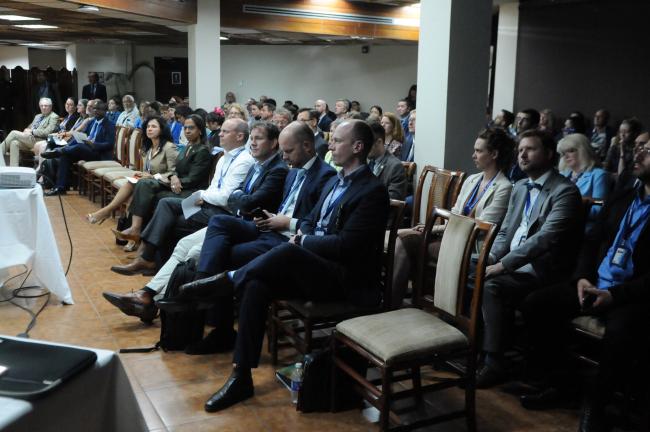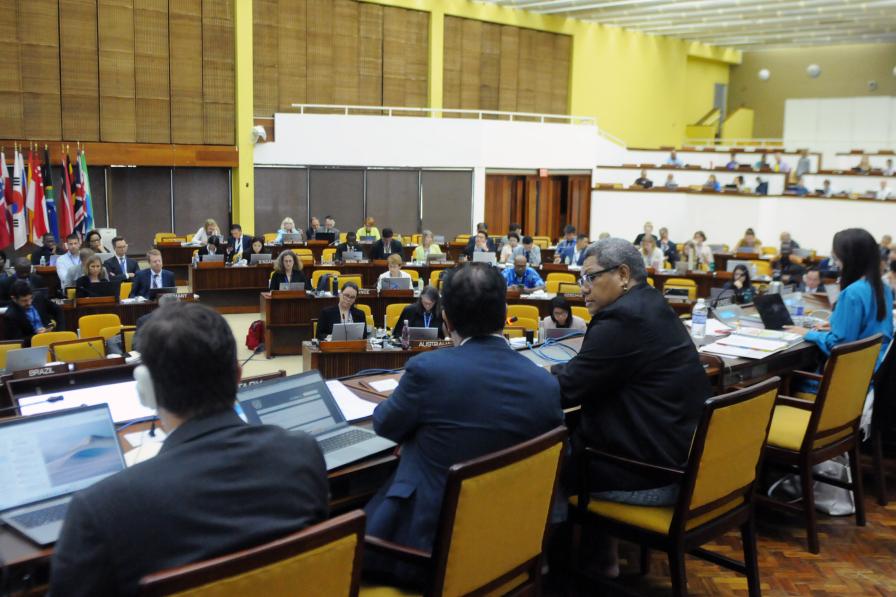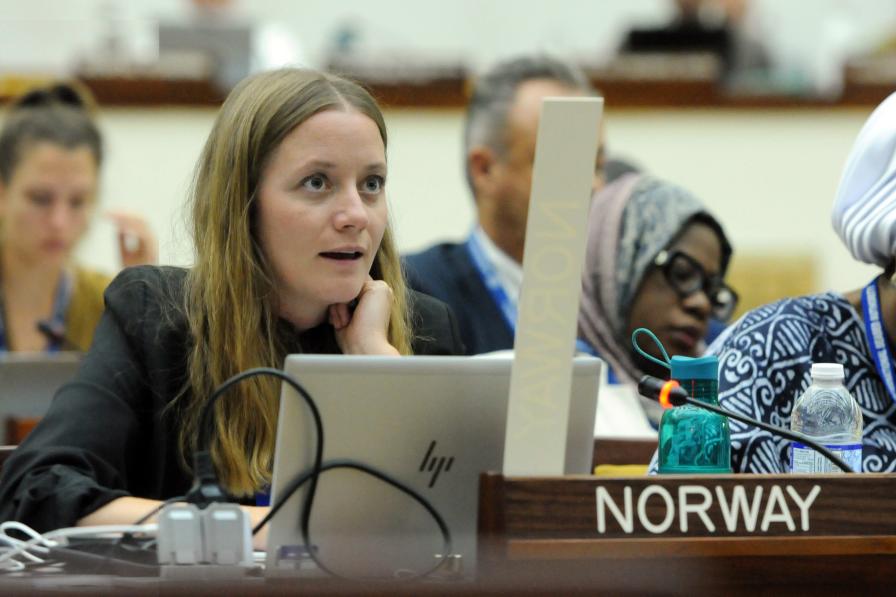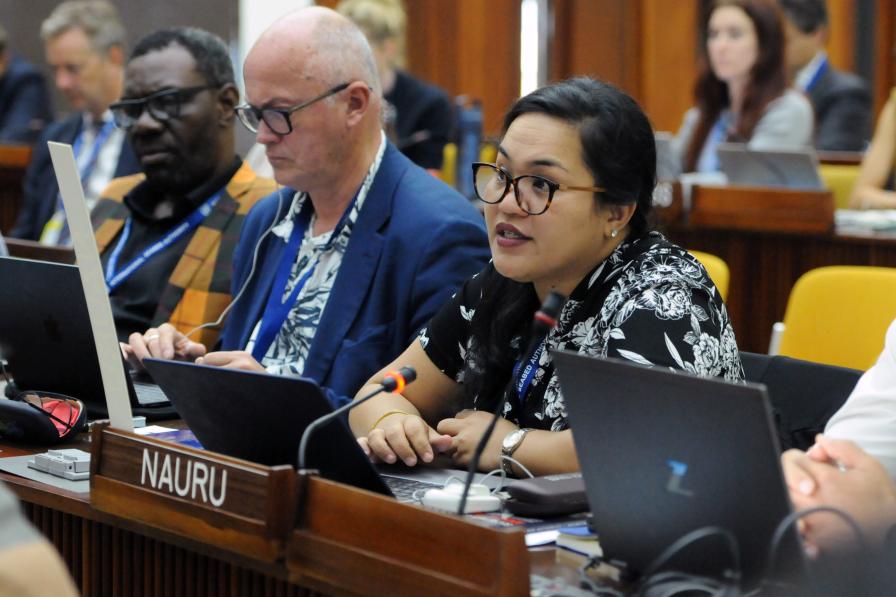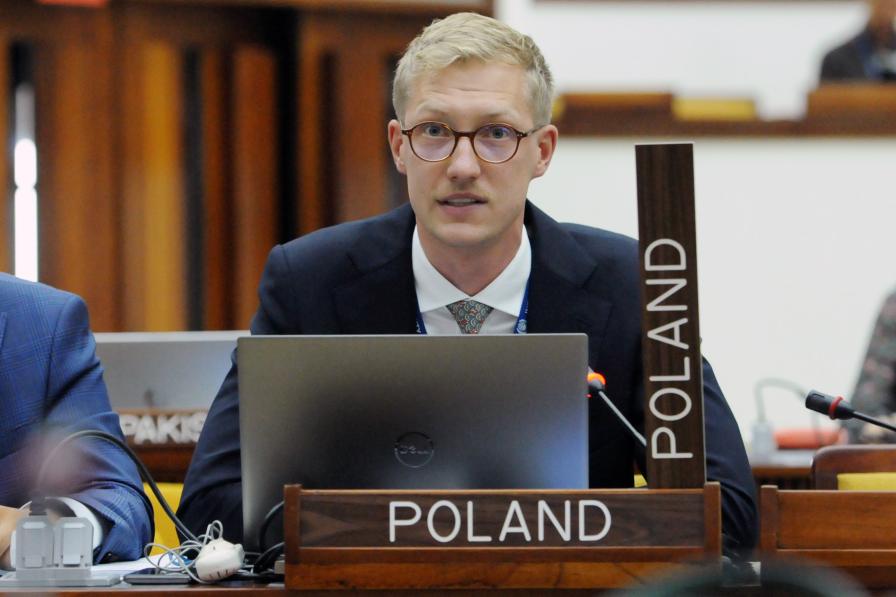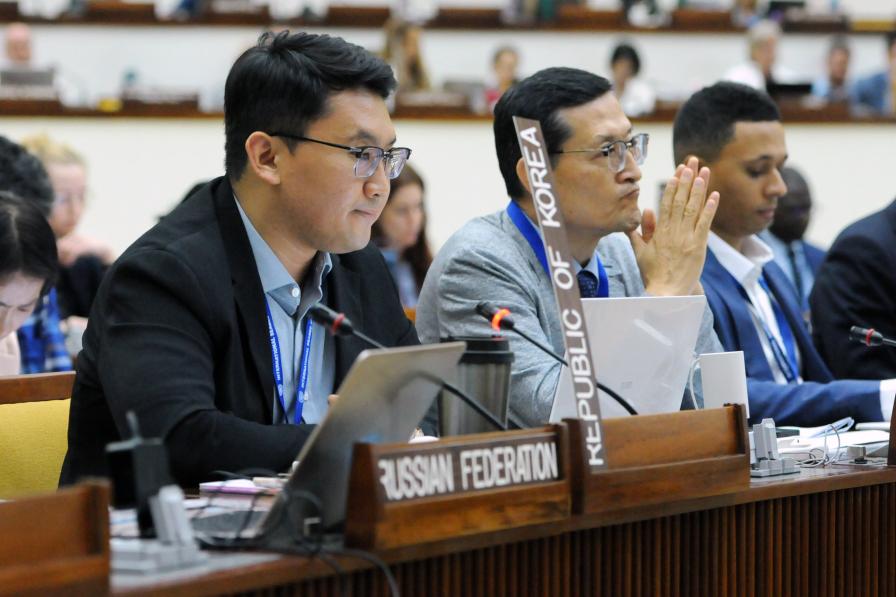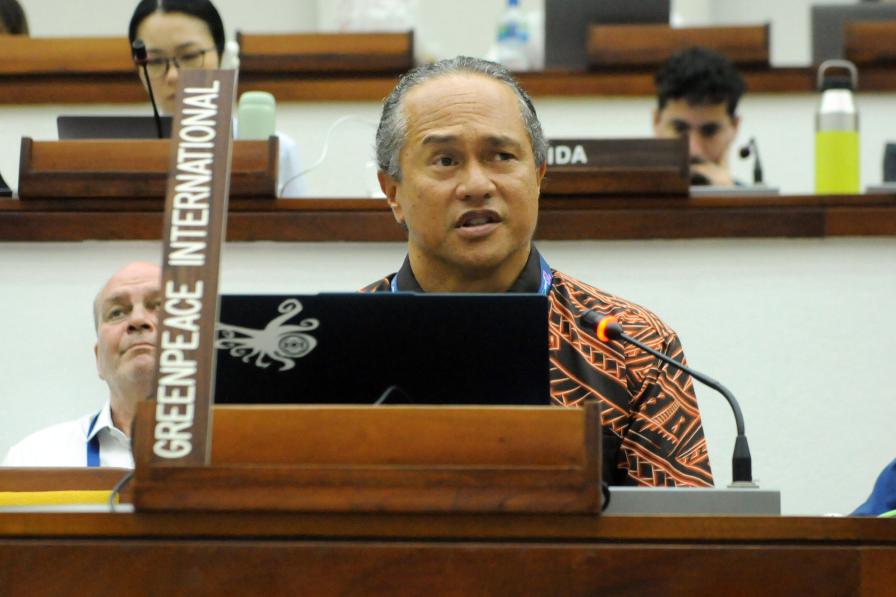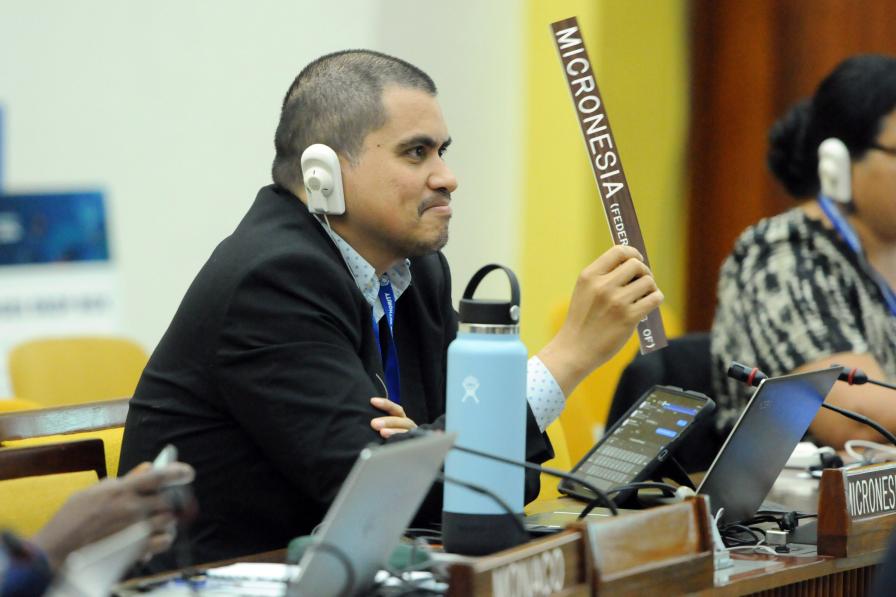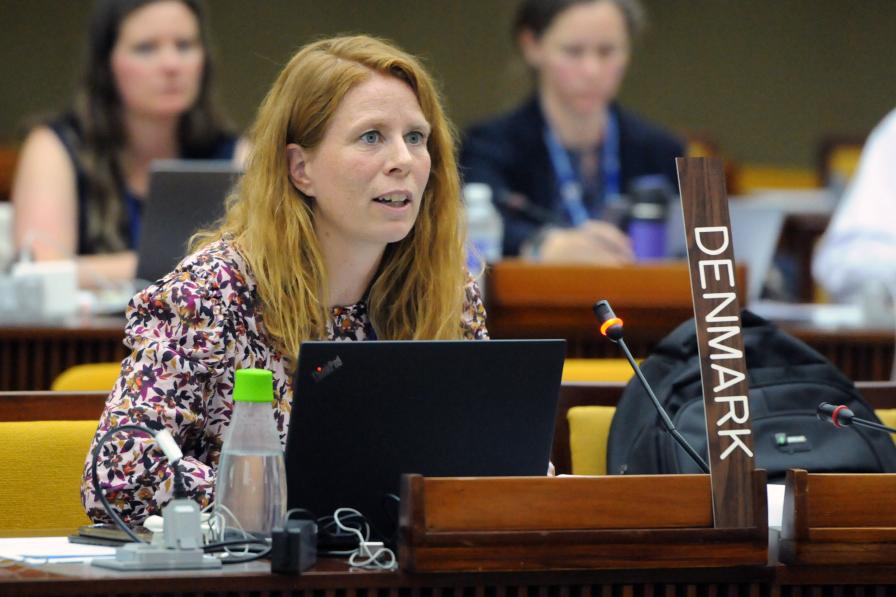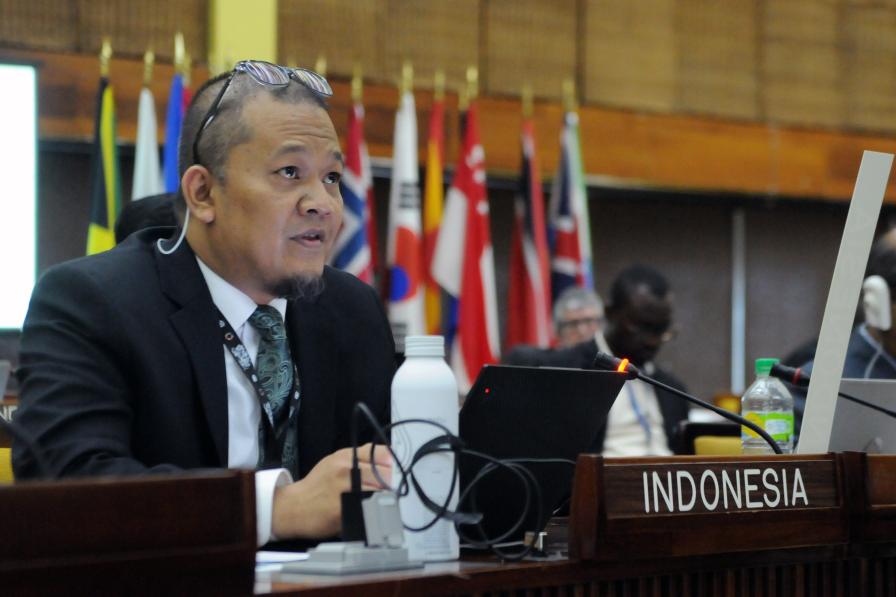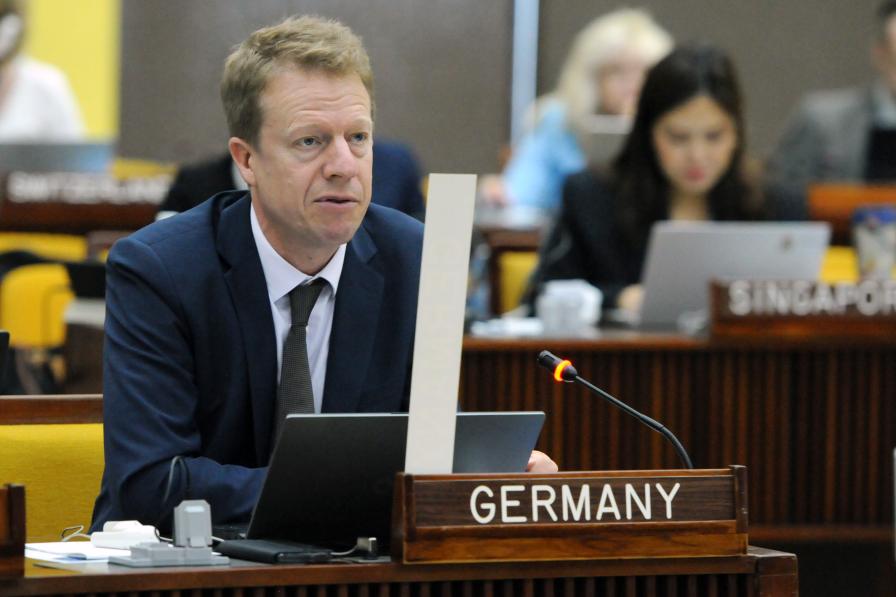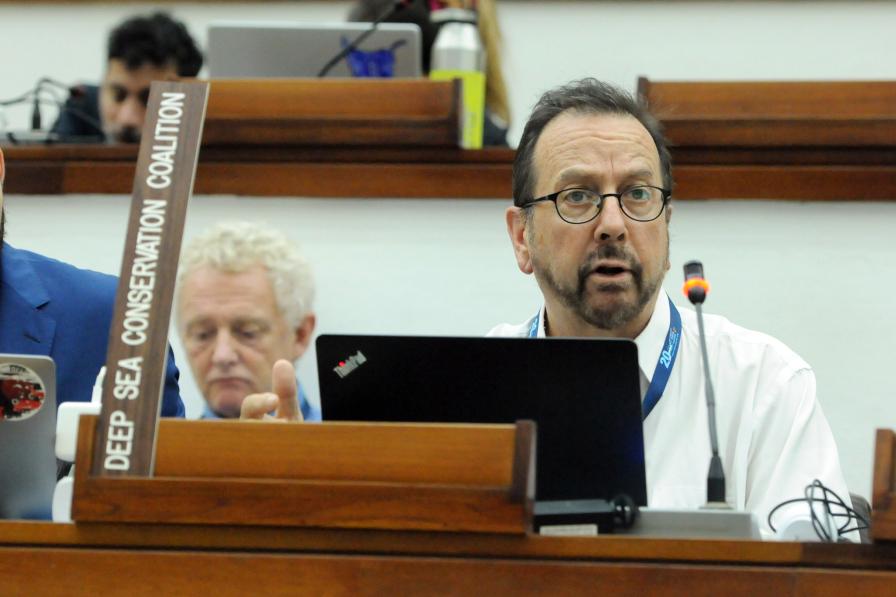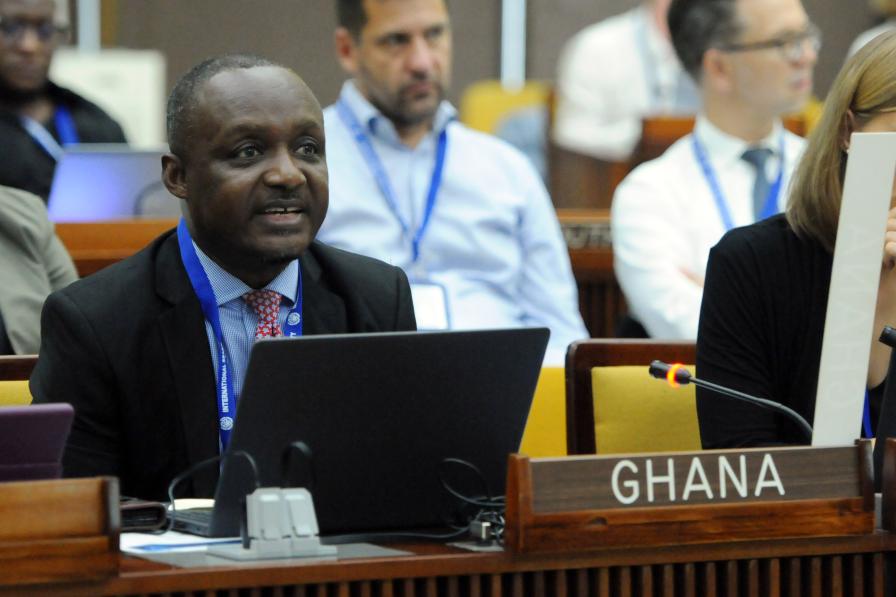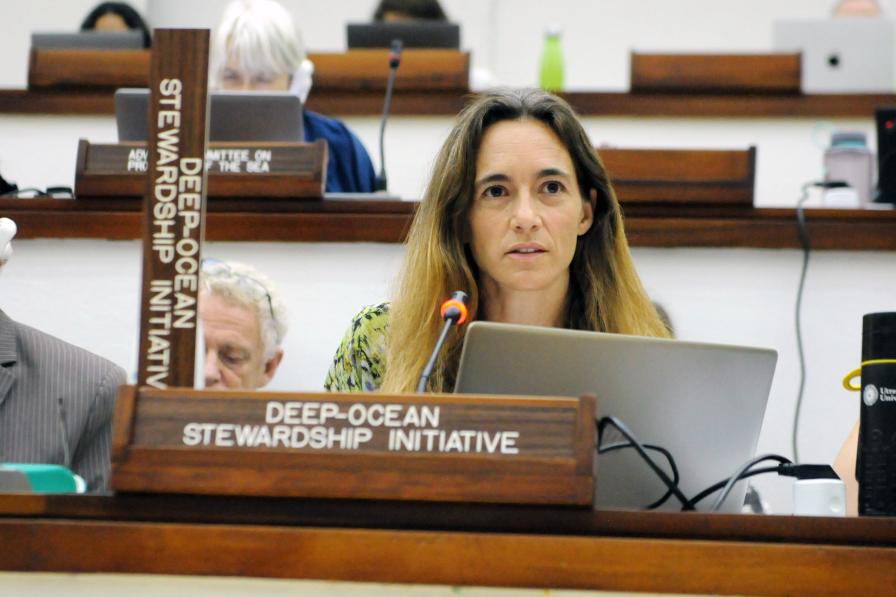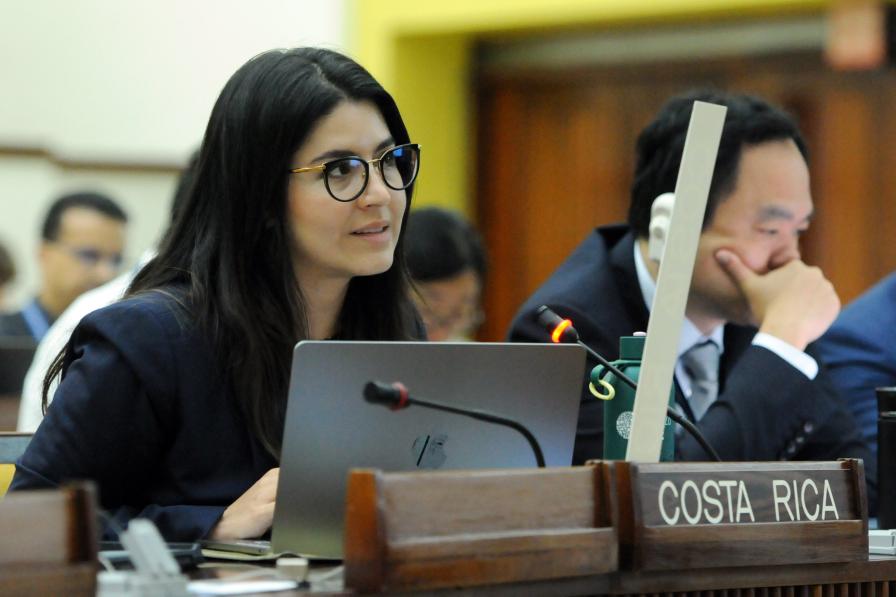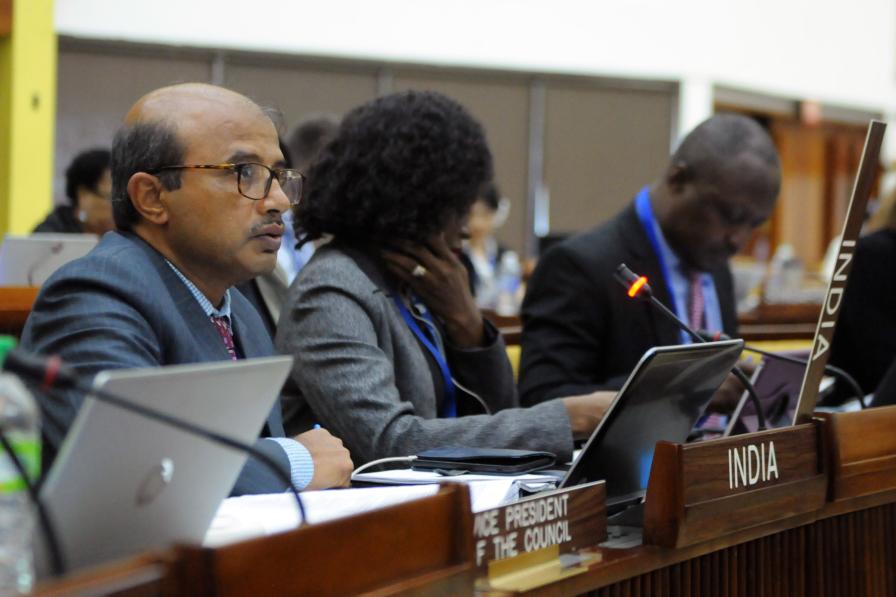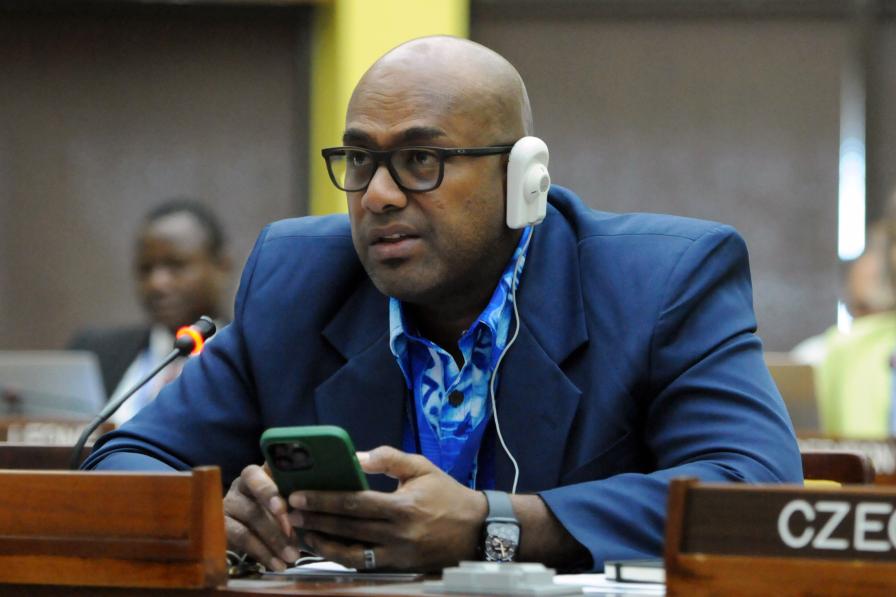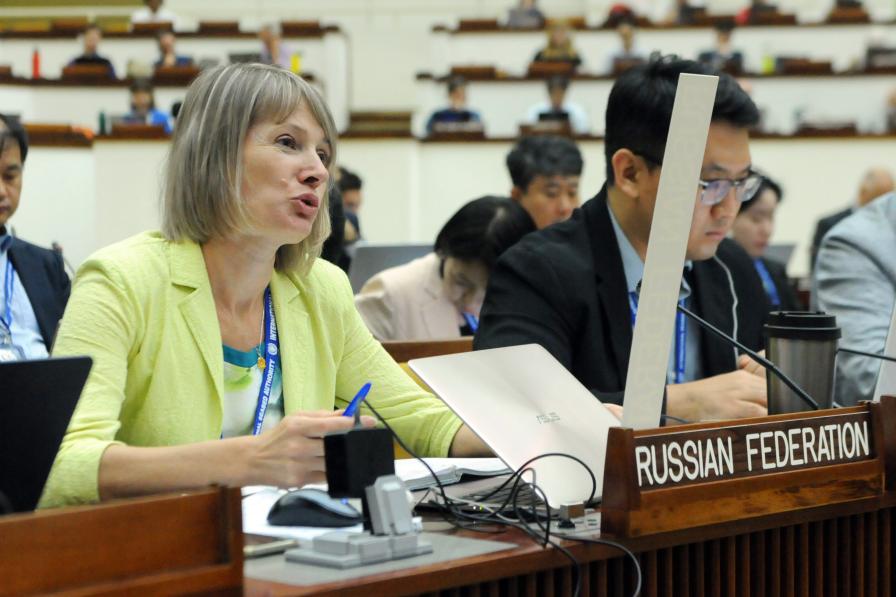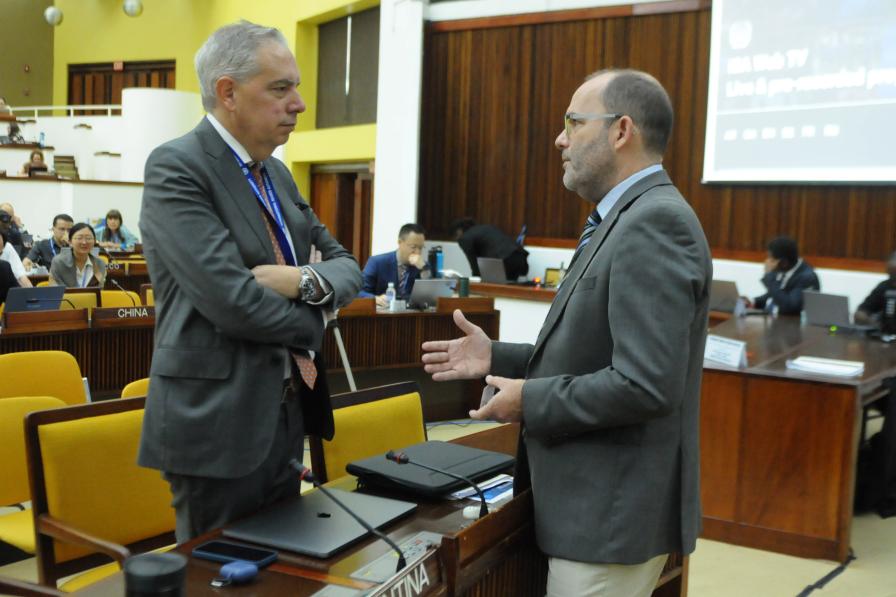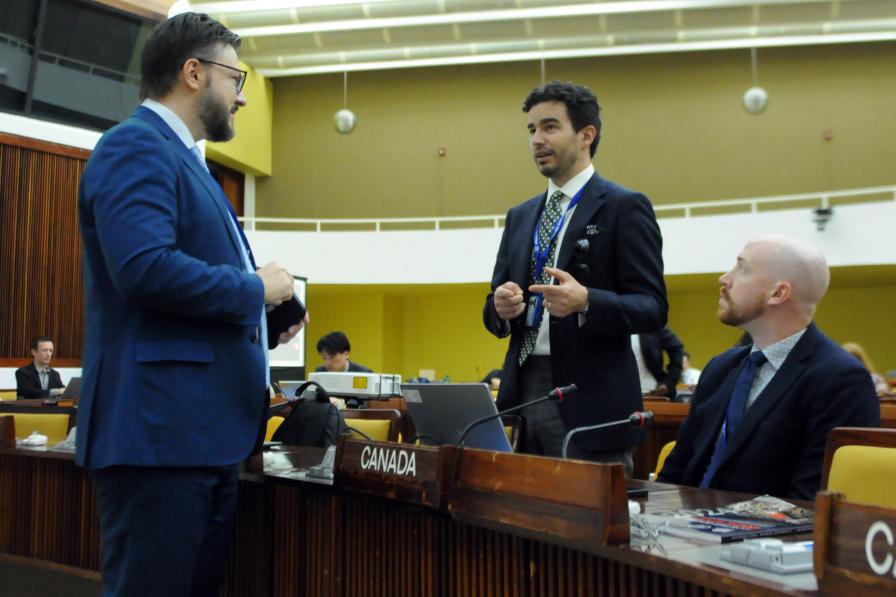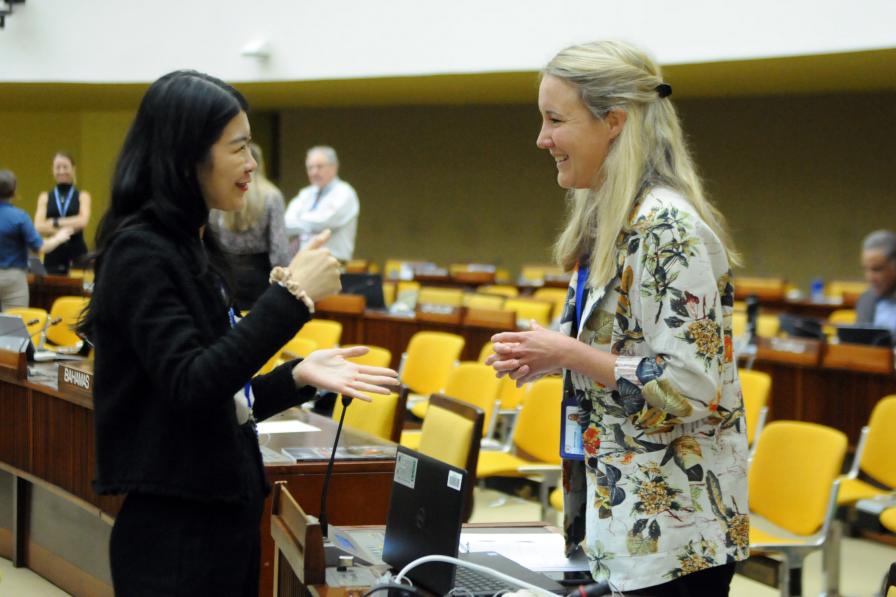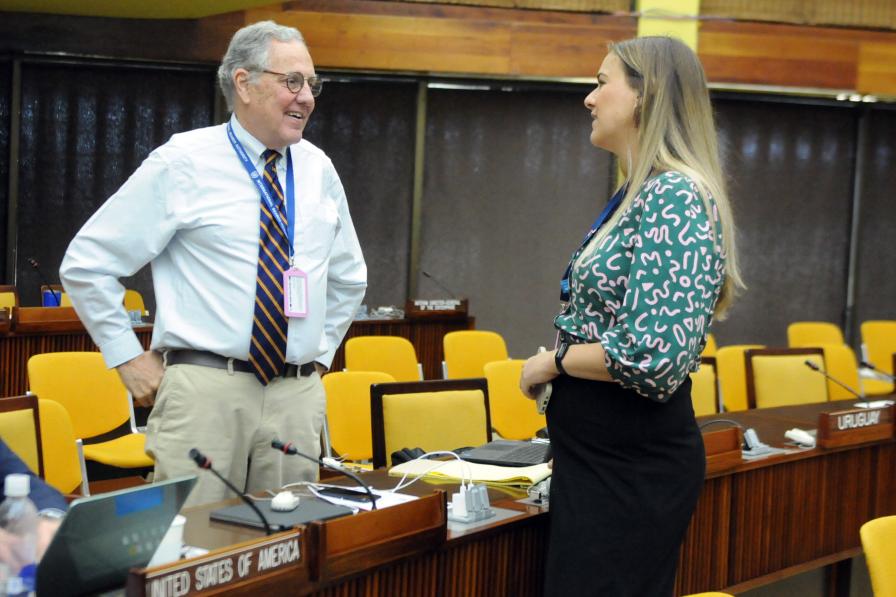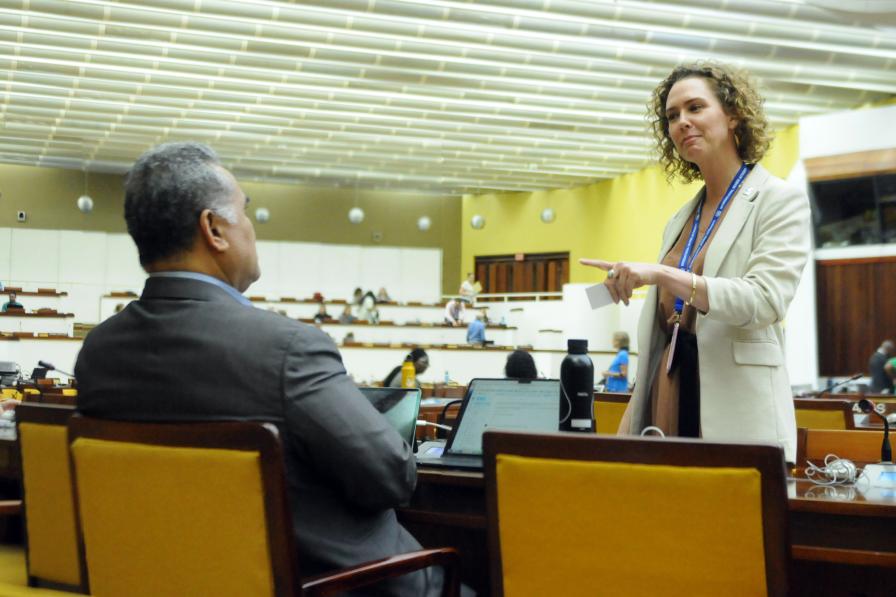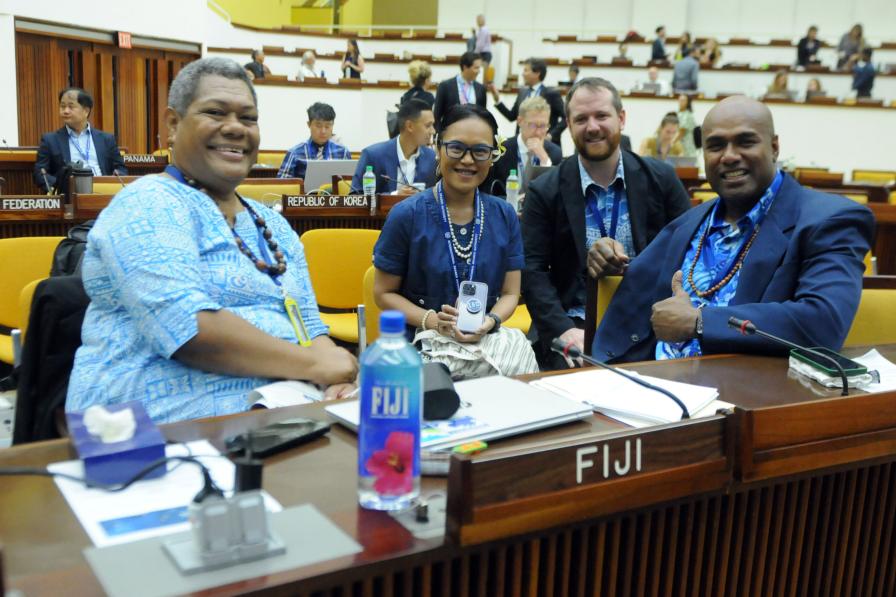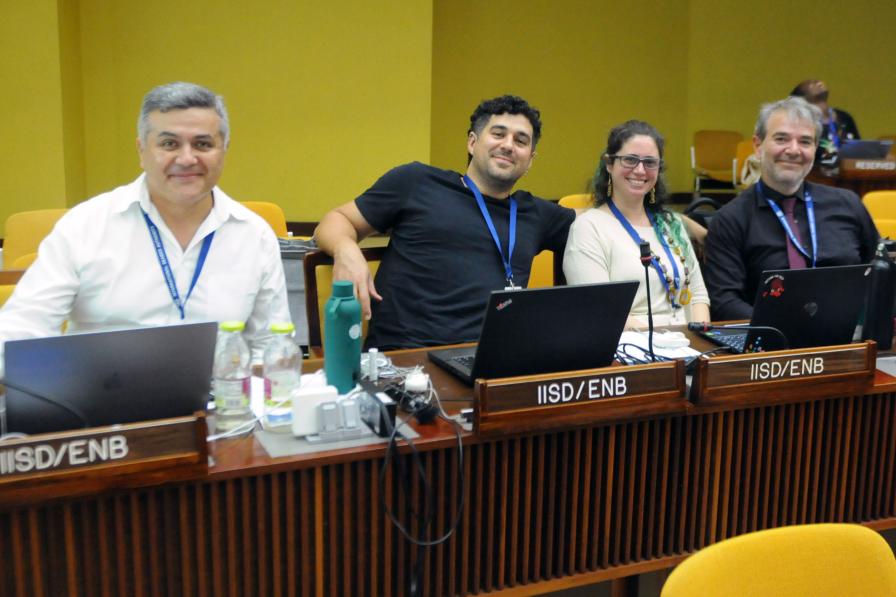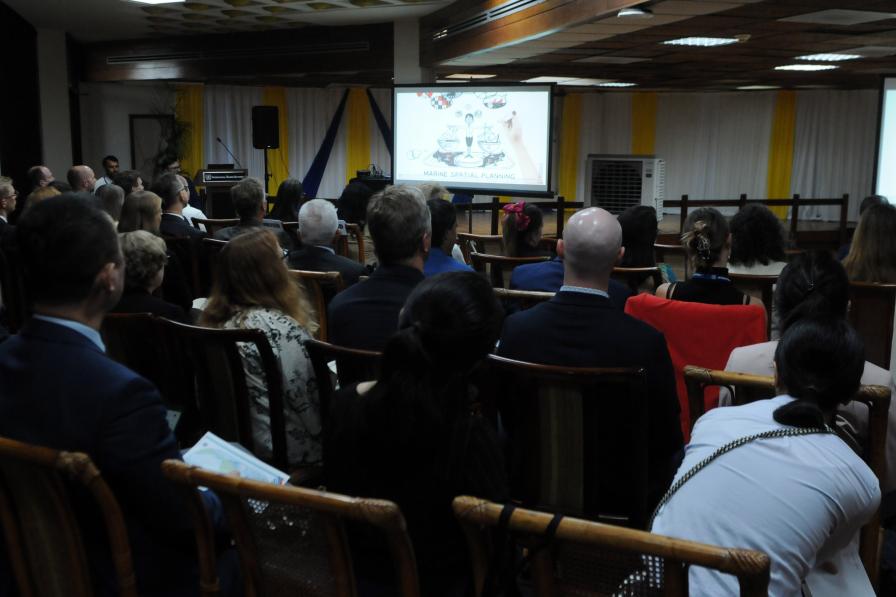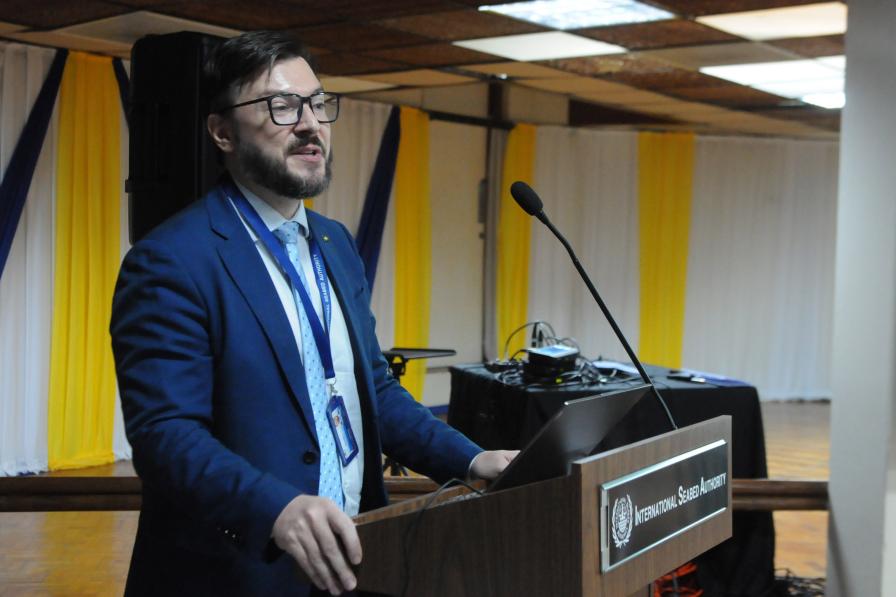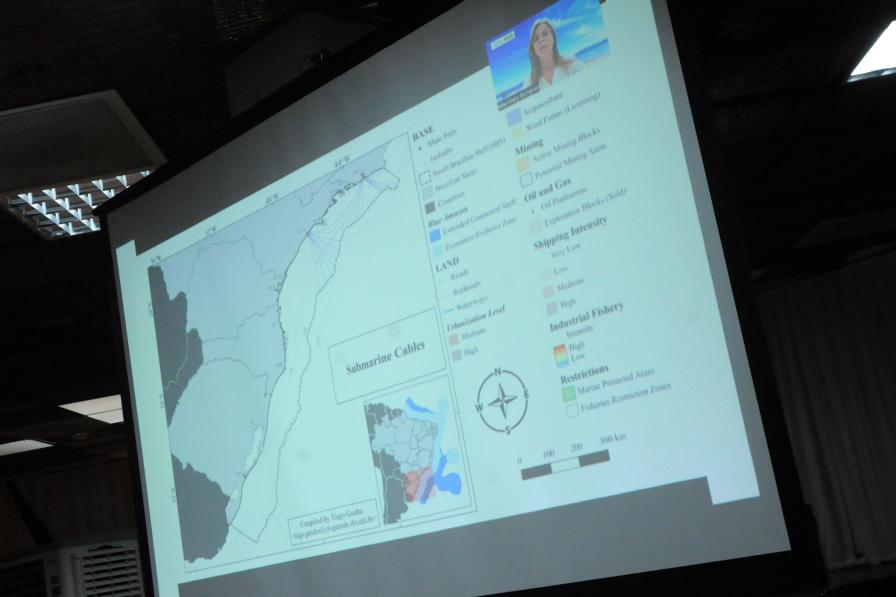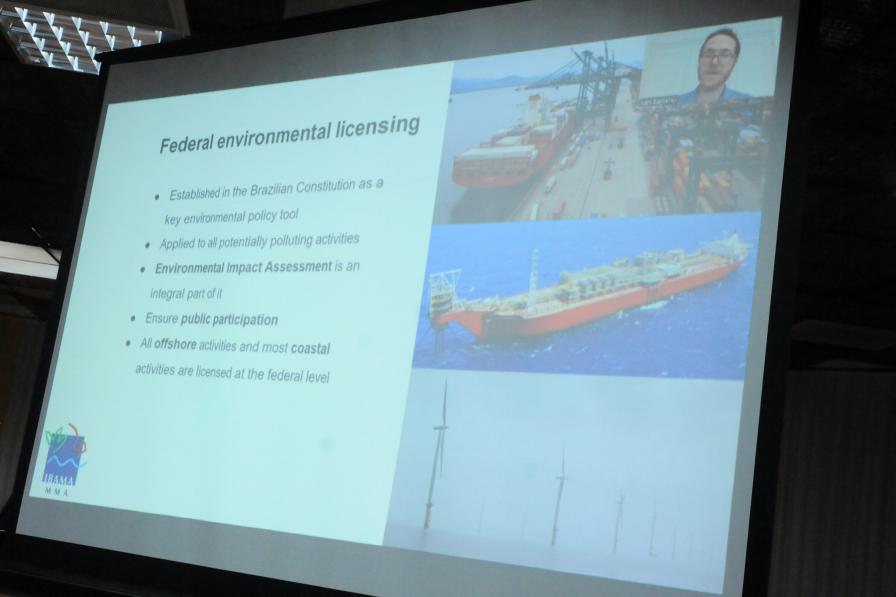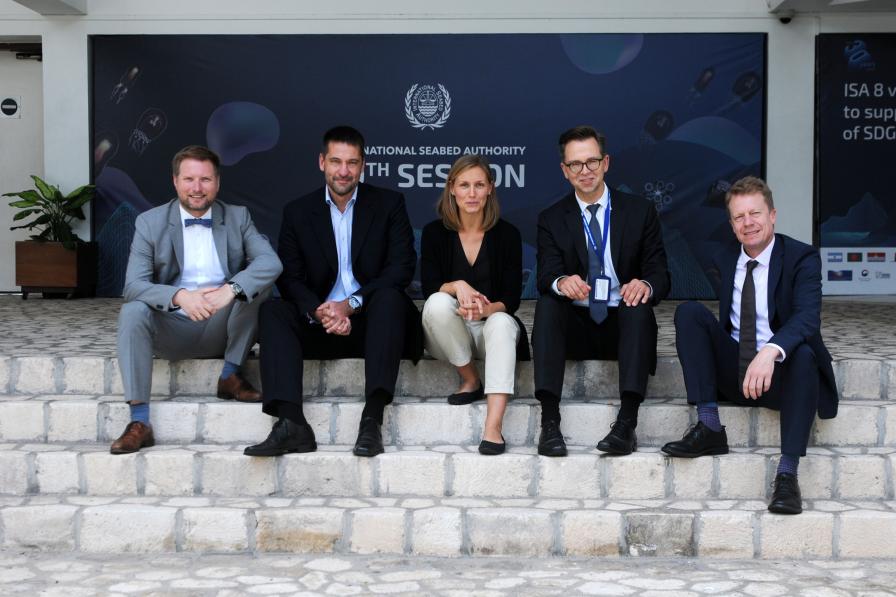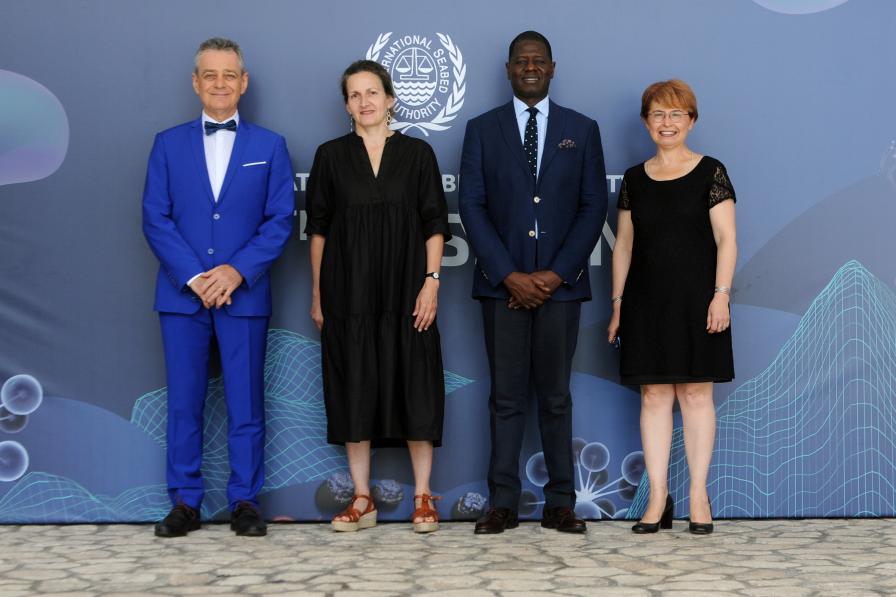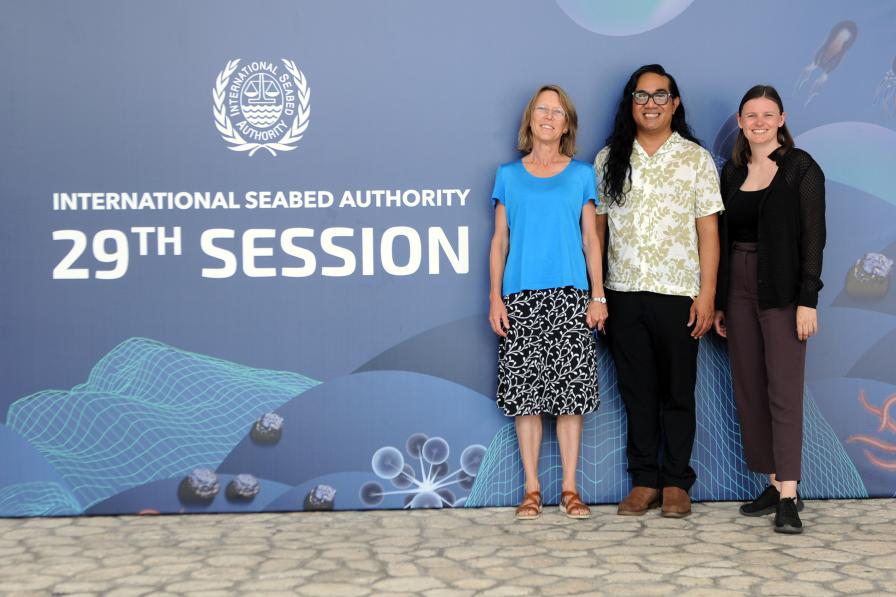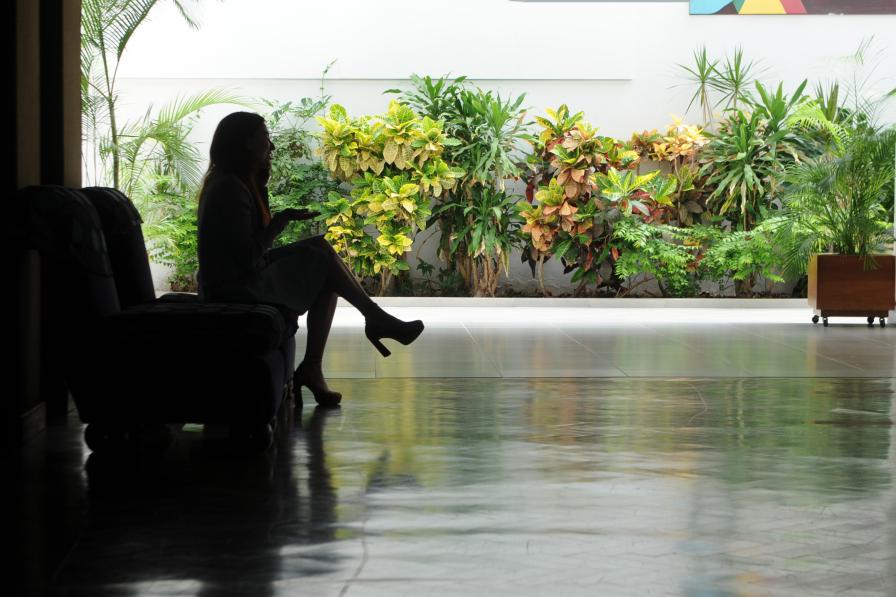The protection and preservation of the marine environment from the impacts and effects of deep-sea mining took center stage in the negotiations at the headquarters of the International Seabed Authority (ISA). The relevant informal working group, facilitated by Raijeli Taga (Fiji), met throughout the day addressing issues around environmental impact assessments (EIAs), environmental impact statements (EISs), and environmental monitoring and management.
In the morning, the Netherlands presented a joint proposal with the UK, focusing on restructuring the EIA and EIS provisions and placing them into appropriate locations across the regulations, annexes, standards, and guidelines. She underscored two relevant questions, namely: whether the Council considers that Annex IV (EIS) should be reworded to be a list of active requirements; and whether the template should be recommendatory or prescriptive.
Delegates stressed the proposal provides a good basis for further discussions. Many emphasized the need for further work on moving detailed content to applicable standards and guidelines. Some proposed this be done when the Council discusses standards and guidelines, while a few suggested the Legal and Technical Commission (LTC) take up this task.
Some delegates supported rewording Annex IV as a list of requirements. Others stressed that provisions on EIAs and environmental monitoring should be binding, suggesting moving details to standards rather than guidelines. One member suggested including the EIS template in a guideline cautioning a rigid or restrictive approach.
Observers underscored that a consistent approach to assessing environmental impacts better enables the comparison of baseline data. They stressed that two separate duties exist on stakeholder consultation: one for the contractor and one for the ISA. They highlighted the need for the free, prior, and informed consent of Indigenous Peoples and called for a transparent and interactive stakeholders' consultation process.
On the environmental impact assessment process (regulation 46), delegates debated the purpose of the EIA and scoping report in relation to an application for a plan of work and to what extent an EIA should identify, predict, and evaluate environmental impacts, effects, and risks. Many supported that EIAs should address the potential impacts and effects of the proposed activities.
Delegates highlighted the need for sufficient baseline data. A delegation stressed that the regulation could be more comprehensive by incorporating language from the UN Agreement on Marine Biodiversity of Areas Beyond National Jurisdiction (BBNJ Agreement) that includes reference to economic, social, cultural, and cumulative impacts and effects, in addition to environmental ones.
In the afternoon, Facilitator Taga invited delegates to focus on environmental monitoring and management. Norway presented a restructuring proposal of the relevant draft regulations, noting that the purpose is to place them in a logical structure and eliminate overlaps and inconsistencies. Many delegates supported the proposal, expressing readiness to participate in further work.
Members then addressed the relevant draft exploitation regulations, namely:
- environmental monitoring (regulation 49);
- the environmental management and monitoring plan (EMMP, regulation 50);
- the environmental management system (regulation 50 bis);
- compliance with the EMMP (regulation 51); and
- performance assessments of the EMMP (regulation 52).
On environmental monitoring, some members urged reintroducing a proposal for an independent monitoring programme for the first seven years of mining operations, stressing that contractors’ self-monitoring is not in line with good governance.
On the EMMP, a delegate queried whether applicants should have to submit the EMMP prior to or after a contract is awarded. In the same vein, another asked how the contractor is expected to incorporate any LTC recommendations approved by the Council in its consideration of the EIS if applicants submit the EMMP and the EIS at the same time as part of the plan of work.
On the environment management system, delegates requested clarity around how it could be externally audited, encouraging additional intersessional work.
Compliance with the EMMP brought forth a robust discussion on the need to clarify what the ISA will do with EMMP data and the frequency of reporting.
On performance assessments of the EMMP, delegates debated whether such performance assessments would take place internally or independently and the need for stakeholder consultation. Observers encouraged collaborative monitoring efforts and urged the collective sharing of data.
In the evening, the Permanent Mission of Brazil to ISA organized a side event titled “The ISA: sustainable use of natural resources and development.”
To receive free coverage of global environmental events delivered to your inbox, subscribe to the ENB Update newsletter.
All ENB photos are free to use with attribution. For the 2nd Part of the 29th Annual Session of the ISA, please use: Photo by IISD/ENB - Diego Noguera
Informal Working Group on the Protection and Preservation of the Marine Environment
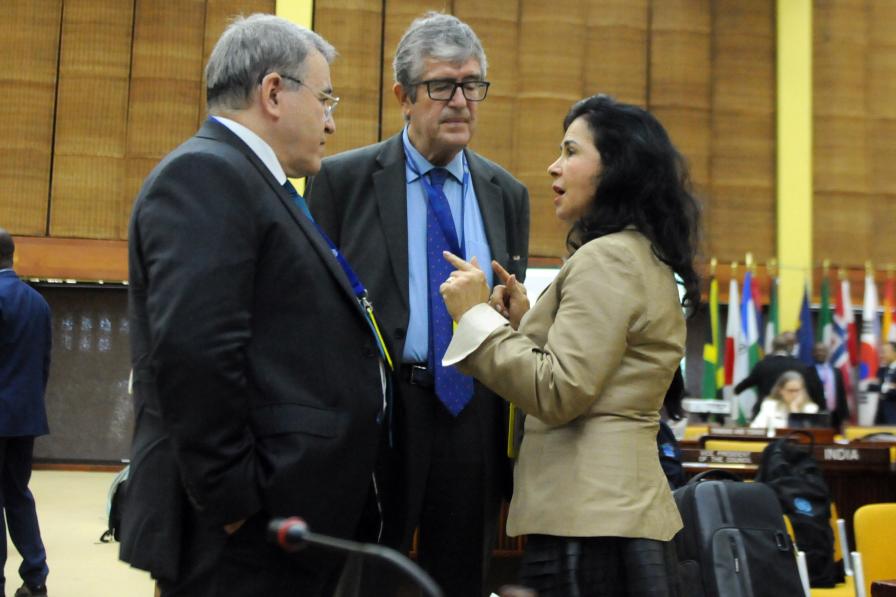
(L-R) José Antonio Cabedo, Chile; Diego Bermejo Romero de Terreros, Spain; and Elza Moreira Marcelino de Castro, Brazil
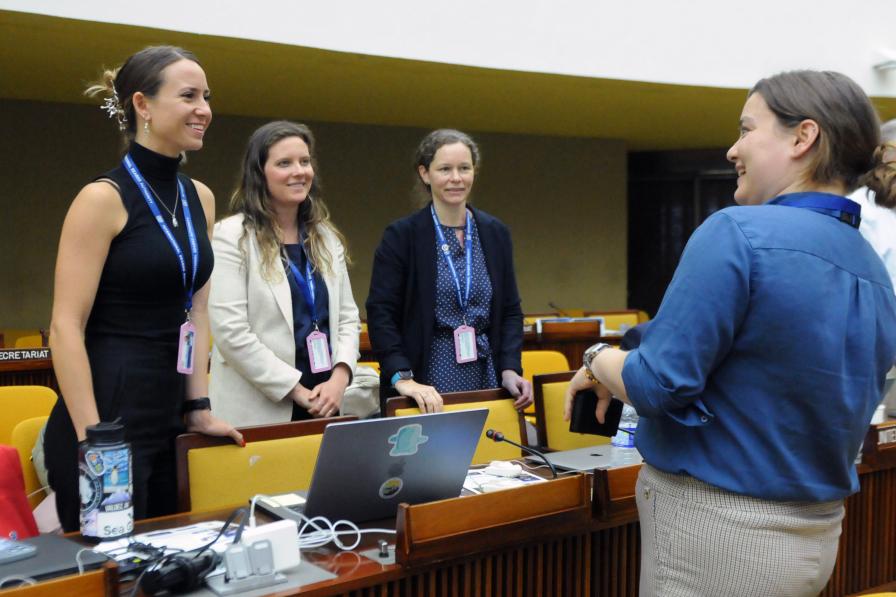
(L-R) Lila Bellucci, Kira Mizell, and Sheila Bialias, US, with Madeline Warner, The Ocean Foundation
Side Event "The ISA: Sustainable Use of Natural Resources and Development"
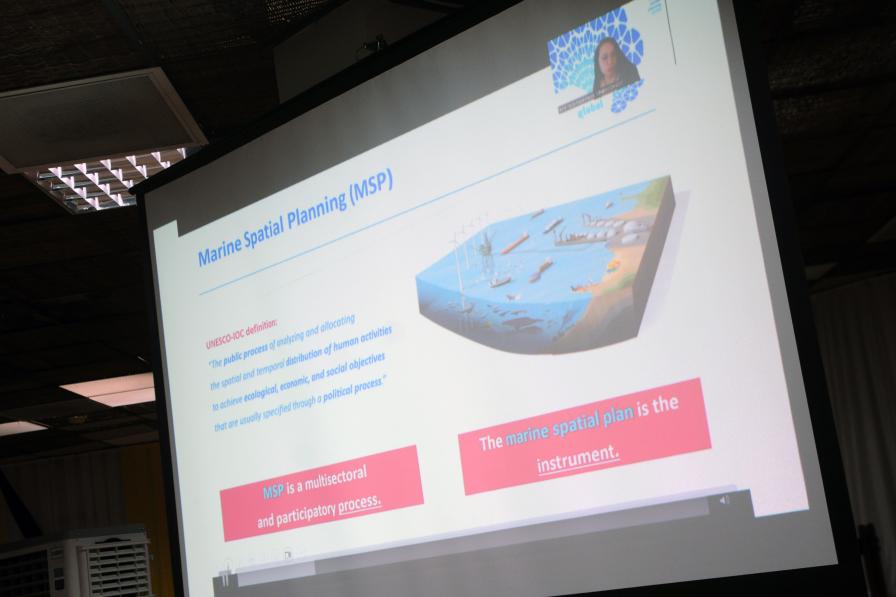
Michele Quesada da Silva, Intergovernmental Oceanographic Commission of the UN Educational, Scientific and Cultural Organization (IOC/UNESCO), presents online on the principles and global status of marine spatial planning.
